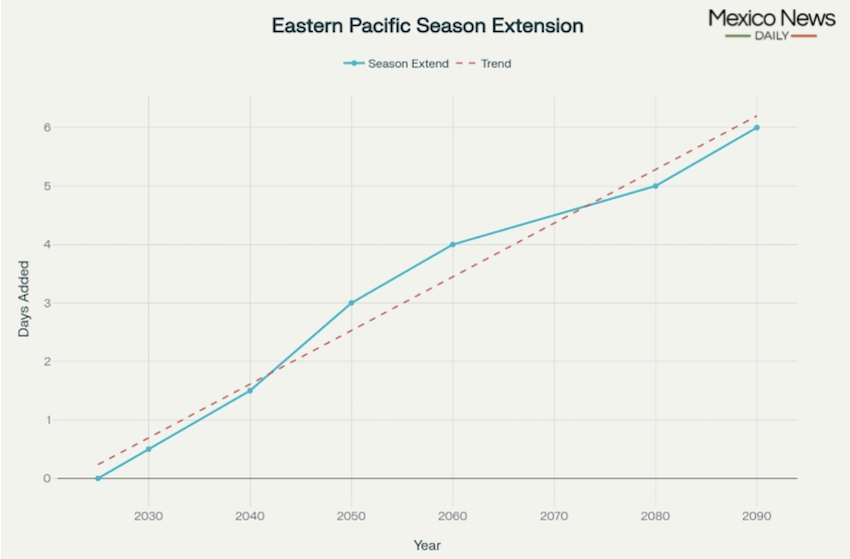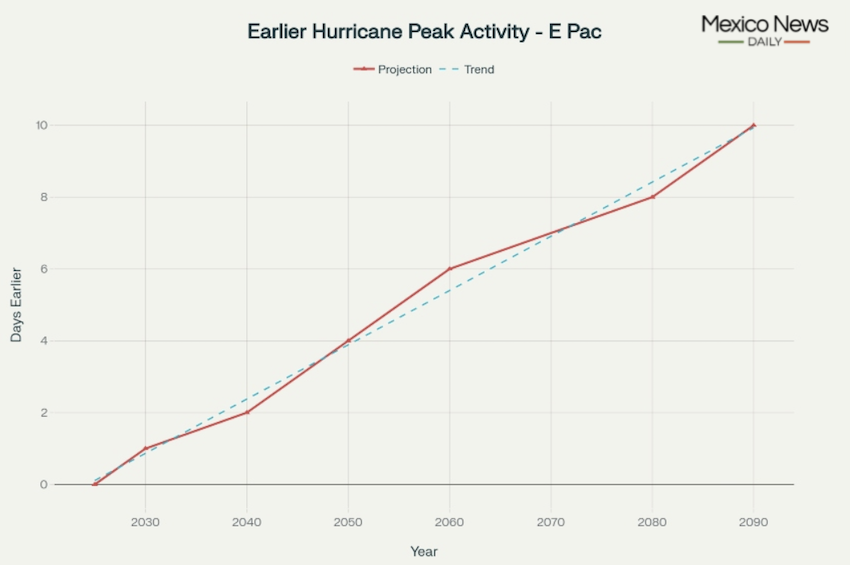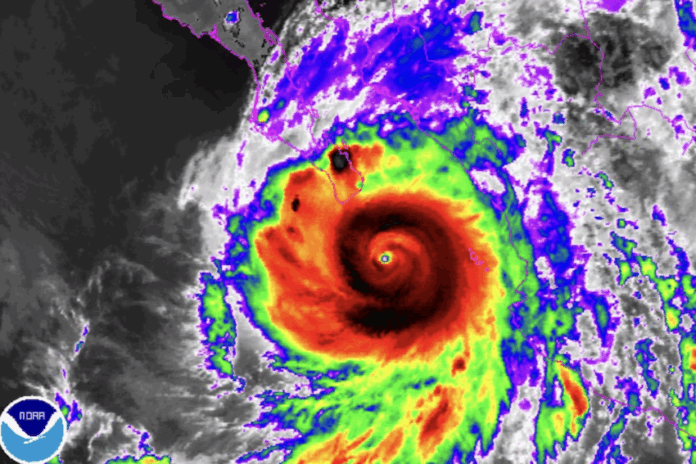If you’re a year-round resident of Los Cabos, September is likely the month when you spend the most time looking at weather reports. Yes, the weather here is gorgeous for nine months per year. But for a hot seasonal spell, August through October, tropical storms or even hurricanes are a distinct possibility. September, most of all, since historically speaking, more storms have affected Baja California Sur during this month than at any other time.
Thus, during this stormier season, like most residents, I am a frequent seasonal visitor to the National Hurricane Center and other weather-related websites. However, this year, my research has been more in-depth than usual. Why? Because through conversations with neighbors, I’ve been alerted to the possibility that hurricane season may be getting longer. No, not officially. Hurricane season in Los Cabos, and indeed the entirety of the Eastern Pacific region, has remained the same — May 15 to November 30 — since 1962. That being the year those calendar parameters were first established by the U.S. Navy Fleet Weather Center. Rather, such speculations are based purely on climate change and its possible effects. Here’s what I’ve found out.
Hurricane season will probably get longer, but not soon and not by much

When a 2015 study was published in the “Journal of Climate,” the projections given for how hurricane season will change during the remainder of the 21st century varied widely according to the modeling methodologies used. Some models showed hurricane season getting longer, but at least one, using High-resolution atmospheric models (HIRAM), actually saw it getting shorter in many regions, including the Eastern Pacific.
However, more recent studies, like the 2021 one in “Oceans,” paint a clearer picture. Hurricane season will get longer by six days in the Eastern Pacific by the end of the century (but only by one day by 2040). But since hurricane season already comprises more than half of every year, a few more days being added over the next 75 years shouldn’t be the key takeaway from this latest research. Rather, what’s really important is the revelation that a) peak activity is going to happen sooner in the coming decades (think August instead of September), and b) that storms are going to get significantly stronger.
Peak hurricane activity will happen sooner in the coming decades
As previously mentioned, September is the month to watch in Los Cabos in terms of tropical storm activity, as over the years, more storms have affected the region during this month than in August and October combined. However, by 2100, it’s projected that the period of peak storm activity in Los Cabos will increasingly shift forward in the calendar, moving from September to mid-to-late August.
This trend was identified in a 2023 article in Nature, which noted “a significant seasonal advance of intense TCs (tropical cyclones) since the 1980s in most tropical oceans, with earlier-shifting rates of 3.7 and 3.2 days per decade for the Northern and Southern Hemispheres, respectively.” Indeed, by the year 2090, peak storm activity will have moved up by an estimated 8-10 days.
There will likely be fewer storms, but they’ll be stronger
The good news is that the number of named storms in the Eastern Pacific region will decrease slightly on an annual basis moving forward. From 1991 to 2020, there were 15.4 named storms, on average, each year. By 2050, that number will decline to 14.8, and by the end of the century, it will only be 13.7.
The bad news is that because of rising ocean temperatures — up 2.8 degrees Fahrenheit over the past 125 years — plus other factors, storms are projected to increase in strength. Yes, this is the scary part. As ScienceBrief pointed out in 2021: “The proportion of category 4-5 storms is projected to increase substantially under a warming climate.”

Indeed, the largest increase in maximum wind speeds is expected to take place in the Eastern Pacific region, with an intensity of 7.7 more meters per second (equivalent to 17.24 miles per hour) above the baseline average. This increased intensity will help push storms into higher categories, lifting tropical storms into hurricane status, and elevating what would have been hurricanes into major hurricanes.
These stronger storms will also bring more rain, with a 40% increase in precipitation over Northern Mexico expected in the coming decades.
Los Cabos will get hotter by the end of the century
As long as we’re discussing climate change in Los Cabos, we might as well address the elephant in the room: that being increasingly rising temperatures. Concerningly, Mexico as a country is warming well above the global average, the National Autonomous University of Mexico (UNAM) reports, heating up 3.2 degrees Celsius (5.76 degrees Fahrenheit) per century, compared to 2 degrees for the world at large.
As for Los Cabos, data gathered from weather stations and extrapolated in the 2021 study “Climate Change and Extreme Temperature Trends in the Baja California Peninsula, Mexico,” suggests that Cabo San Lucas will see temperatures increasing by 0.406 degrees Celsius (0.731 degrees Fahrenheit) per decade. Although temperatures are increasing throughout the peninsula, the study notes that Cabo San Lucas was one of the places “where a statistically significant trend of increasing maximum temperatures was determined.”
Thus, based on this warming trend, it’s possible to project that average August temperatures of 92.7 degrees Fahrenheit in Cabo San Lucas could exceed 96 degrees by the end of the 21st century. Although such projections don’t exist specifically for San José del Cabo (at least that I could find), it bears noting that temperatures there are traditionally even hotter (by 3 to 5 degrees Fahrenheit) than those in Cabo San Lucas, since the latter benefits from cooling Pacific Ocean breezes.
So it’ll be hotter, with longer hurricane seasons, stronger storms and more rain. Oh, the sea level is rising, too. Currently, only at a rate of 2.60 millimeters per year. But that will accelerate in the years to come, like seemingly everything else.
Chris Sands is the Cabo San Lucas local expert for the USA Today travel website 10 Best, writer of Fodor’s Los Cabos travel guidebook and a contributor to numerous websites and publications, including Tasting Table, Marriott Bonvoy Traveler, Forbes Travel Guide, Porthole Cruise, Cabo Living and Mexico News Daily. His specialty is travel-related content and lifestyle features focused on food, wine and golf.
